Getting leads can feel confusing when you're just starting out — especially if you're unsure where to begin or which strategy actually works. Lead generation is simply about finding people who might be interested in your product or service, and guiding them to take action.
According to HubSpot, 61% of marketers say generating leads is their biggest challenge, which makes it even more important to start with a clear, beginner-friendly lead generation strategy.
In this guide, you'll learn practical ways to generate leads, attract potential customers, and start building a list of quality leads without overthinking it. Let’s break it down step by step — no jargon, no guesswork.
What Is Lead Generation?
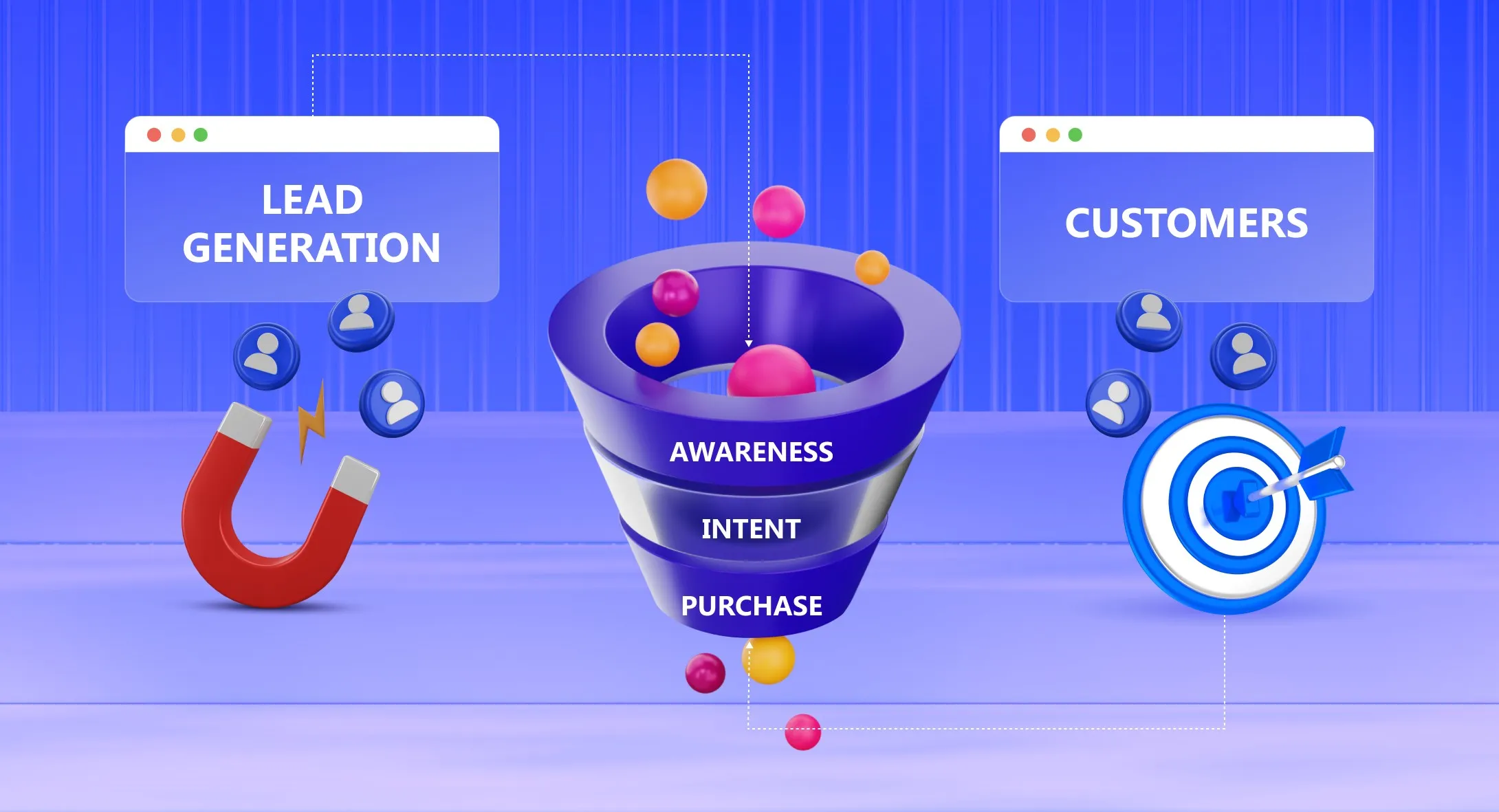
Lead generation is simply about finding people who are likely to be interested in what you offer. These people aren’t customers yet — but they’ve shown some level of interest. Maybe they clicked on your ad, filled a lead form, or signed up for a free resource.
You're not convincing strangers out of nowhere. You're helping potential leads discover something useful or valuable. That’s how you move someone from “just browsing” to genuinely considering your product or service.
At its core, lead generation is a way to start meaningful conversations with your target audience. It’s not about chasing everyone. It’s about reaching the right people, with the right message, at the right time.
According to Ruler Analytics, 91% of marketers say lead generation is their most important goal.
Here’s what makes up the basics of lead generation:
- Collecting lead information (like name or email) using a lead capture method
- Creating helpful content to attract qualified leads
- Using tools like landing pages, lead forms, or even lead generation companies
- Organizing leads through lead management software
- Prioritizing leads using lead scoring or a lead generation funnel
Not all leads are equal — some are just curious, while others are nearly ready to buy. That’s why qualifying leads matters before sending them to your sales team.
Who Counts as a Lead?

Not everyone who clicks your ad or visits your website is a lead. A lead is someone who shows real interest in your product or service and shares a way to contact them — like filling out a lead form or subscribing to updates. That interest may be small at first, but it’s enough to start a conversation.
Now, not all leads are created equal. Some are ready to talk to your sales team today, while others are just starting to explore their options. That’s why qualifying leads matters so much.
A good lead generation strategy includes knowing which types of leads to focus on — and which ones to wait on. Here's how different kinds of leads are often categorized:
Types of Leads You’ll Come Across
1. Marketing Qualified Leads (MQLs)
These are people who’ve engaged with your marketing campaigns, like downloading a free guide or reading multiple blog posts. They’ve shown interest, but they're not ready for a sales pitch just yet. Your marketing team usually owns these leads and continues nurturing them.
2. Sales Qualified Leads (SQLs)
SQLs have taken actions that suggest they’re ready to talk to your sales team. Maybe they requested a demo or pricing details. These leads are passed from marketing to sales because their buying process is further along.
3. Sales Ready Leads
These leads are seriously considering a purchase. They may have compared different lead generation tools or spoken to competitors. Your sales teams should act quickly when these come in.
4. Warm Leads
Warm leads have shown light engagement — like clicking a few emails or visiting your landing pages. They’re interested, but not urgent. With the right content, they can be moved down the sales funnel.
5. Prospective Leads
These are people who fit your target audience but haven’t interacted yet. Maybe they found you through search engine optimization or heard about you via online lead generation. They need a reason to engage — like a strong lead magnet or a targeted ad.
“Only 25% of leads are immediately sales-ready,” according to Gleanster Research. The rest need nurturing, qualification, or more time.
Your marketing team and sales teams need to agree on what defines a qualified lead — otherwise, you’ll waste time on people who were never likely to convert.
Leads may come from inbound marketing, b2b lead generation, search engine optimization, or even digital marketing ads. The important part is: you’re identifying potential customers, not chasing random clicks.
Where Do Leads Come From?
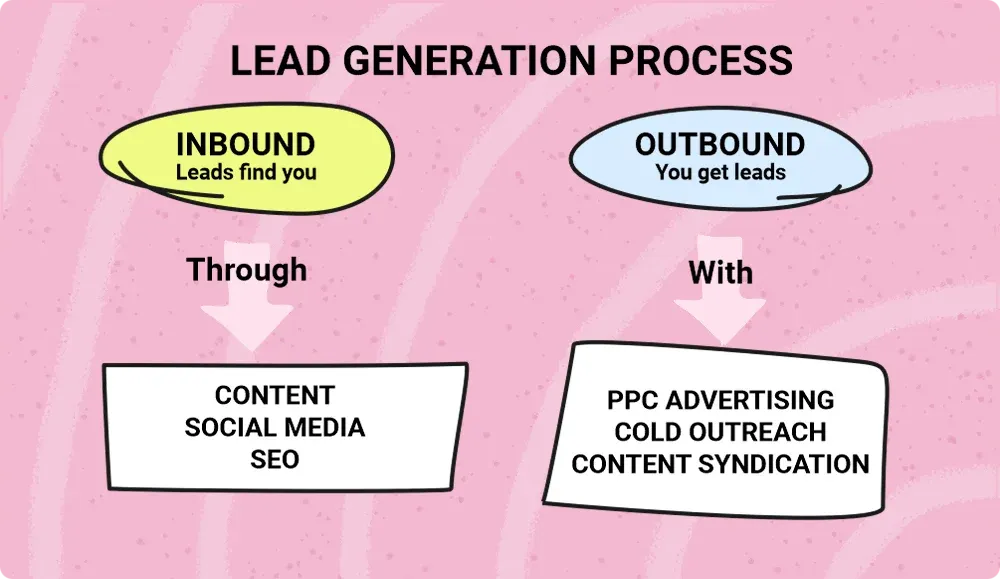
If you're wondering where all the leads are hiding, you're not alone. Leads don’t magically appear — they’re created through a mix of planned effort and the right strategies. Let’s look at the two main sources: inbound and outbound.
1. Inbound Sources
Inbound leads are people who find you — often before you even know they exist. These leads come in because they see value in what you’ve shared or offered. You’re attracting them through helpful content, not chasing them.
Inbound methods are especially popular in content marketing and inbound marketing. You create resources, guides, or tools that make people want to learn more. The trust starts before any direct conversation.
"Inbound leads cost 61% less than outbound leads," according to HubSpot. That’s a big reason why many businesses are investing in inbound strategies.
Here are common inbound lead sources:
- Search Engine Optimization (SEO)
Helps your site show up when people search for your product or service- Naturally attracts potential customers actively looking for solutions
- Works well for both b2b lead generation and individual services
- Landing Pages
Specific pages designed to collect lead information- These often include a lead magnet — like a free download or tool
- You can use A/B tests to find what attracts more leads
- Blog Posts & Articles
Educate readers and include lead capture opportunities- A clear CTA helps move a visitor into your lead generation funnel
- Social Media Platforms
You can share content, engage in comments, and promote offers- Leads may DM you directly or sign up through your bio link
- Works well to build trust with existing customers and attract new leads
- Email Newsletters
Subscribers are already warm — they just need the right nudge- Email helps you collect feedback and improve lead quality over time
2. Outbound Sources
Outbound means you go to the lead — not the other way around. This is more direct and sometimes faster, especially if you're launching a lead generation campaign. You’re reaching out with intent.
With outbound, your sales and marketing teams usually work together. They define the target audience, craft messages, and use different tools to generate leads directly.
Here are common outbound lead sources:
- Cold Emailing & Calling
Outreach to people who haven’t interacted with your brand yet, typically referred to as cold leads- Works when you’re clear about who your qualified leads are
- Must be personalized to avoid being ignored
- Paid Ads (Search & Social)
These help you reach a potential customer quickly- Can be used to test new markets or start generating leads fast
- Must align with your marketing strategy
- LinkedIn & Direct Messaging
Effective for sales lead discovery, especially in B2B- Allows targeting by job title, industry, or location
- Also great for reconnecting with existing customers
- Referral Programs
Ask current clients to refer others- Simple, cost-effective, and often brings in high quality leads
- Builds on trust that’s already earned
The truth? Not all leads come from the same place — or act the same way. The better you understand where your leads come from, the easier it becomes to qualify them, engage meaningfully, and build long-term relationships.
Step by Step Lead Generation Process for Beginners

You don’t need to overthink lead generation — you just need to follow a clear path. This process isn’t about pushing; it’s about creating the right steps so people come to you. Let’s walk through it together.
1. Identify Your Ideal Audience
Before you try to generate leads, you need to know who you’re speaking to. That means figuring out who your quality lead looks like — not just anyone who lands on your site. The clearer you are, the easier it becomes to create something that resonates.
Ask yourself:
- Who needs this product or service?
- What problems are they trying to solve?
- What motivates them to take action?
When you skip this step, even the best lead generation efforts can fall flat.
2. Create a Valuable Offer (Lead Magnet)
You can’t just ask for someone’s email without offering something valuable in return. A lead magnet gives your visitor a reason to share their lead information. Keep it simple — a checklist, mini-guide, or quick template works well.
“Businesses with effective lead magnets convert 30% more visitors into leads,” reports OptinMonster.
To make yours work:
- Align it with a pain point your audience cares about
- Keep the format easy to consume
- Mention it clearly wherever you invite leads in
3. Build a Simple Landing Page
A landing page is where the action happens. It’s a focused page with one clear goal — getting someone to take the next step. No distractions, no fluff.
Your landing page should:
- Include a headline that speaks directly to your target audience
- Highlight your lead magnet or offer
- Use a clear call-to-action (CTA) above the fold
A clean design leads to more conversions and improves lead quality.
4. Drive Traffic to Your Offer
You can’t collect leads if no one sees your offer. That’s where lead generation campaigns come in — small, focused pushes to get eyes on your landing page. You don’t need a big budget to get started.
Some beginner-friendly ways to drive traffic:
- Share your page on forums where your prospective leads hang out
- Ask friends or partners to share it
- Post in relevant groups or communities
Don’t worry about fancy ads yet — just start generating leads by showing up where your audience already is.
5. Capture Lead Information
Now it’s time to actually collect the data. Use a form that asks for just enough — name and email is often all you need at first. Don’t scare people off with too many fields.
Here’s how to keep it simple:
- Use a clear lead capture method like an embedded form
- Keep the design mobile-friendly
- Reinforce trust by reminding people what they’re getting
This step may feel like just the beginning, but it’s a turning point.
6. Store and Organize Leads Properly
If you're scribbling emails in a notebook, stop right there. Good lead management starts with using tools to organize and track your leads. Even free options work for beginners.
Look into:
- Basic lead generation tools that let you manage a small list
- Spreadsheets or free versions of lead management software
- Organizing by tags like “new,” “interested,” or “ready”
Without organization, all the leads you worked for can easily slip through the cracks.
7. Follow Up with a Nurturing Sequence
The final step is where trust really starts to build. Following up doesn’t mean spamming — it means adding value and reminding leads you’re here when they’re ready. This is how you build connection and momentum.
Some ways to nurture leads:
- Send a welcome email that delivers your lead magnet
- Share useful tips related to your customer journey
- Ask questions to understand where they are in the buying process
According to MarketingSherpa, “79% of leads never convert due to lack of lead nurturing.”
If you focus on nurturing early, you’ll see better results — not just more leads, but high quality leads that actually convert.
Lead Generation Strategies that Actually Work

You don’t need dozens of tactics to generate leads — you just need the right ones that fit your audience. The key is keeping things simple and consistent. Below are 8 beginner-friendly strategies that actually work when applied correctly.
1. Use Social Proof
People trust people — not brands. When a visitor sees others using and liking your product or service, it builds confidence. That’s where social proof comes in.
You can include:
- Customer testimonials or quotes
- Trust badges (like “500+ customers”)
- Reviews pulled from Google or LinkedIn
The goal is to show visitors that others have already made the decision they’re now considering.
2. Add Exit-Intent Popups
Most visitors leave without taking action — and you don’t get a second chance. Exit-intent popups appear right before they go, offering something useful in exchange for their email. This strategy helps capture more leads without interrupting the experience.
Try these ideas:
- Offer a free checklist or template
- Ask if they want a discount or early access
- Keep the form short — name and email is enough
The right popup can turn a lost visitor into a warm lead.
3. Place CTAs in Blog Posts
Blog posts can do more than just educate — they can convert. By placing a call-to-action (CTA) naturally within your blog, you guide the reader to the next step. Don’t just save it for the end.
Try this:
- Add a lead magnet after a useful tip
- Place a CTA button mid-way through long posts
- Offer a free resource that matches the blog’s topic
Every post becomes a mini lead generation tool when you do this.
4. Create Quizzes or Polls
Interactive content can work wonders. Quizzes and polls are low-pressure ways for visitors to engage, while giving you insights on their needs. Once they finish, ask for their email to send personalized results.
Ideas to try:
- “Which solution fits you best?” quiz
- A quick 3-question poll before offering content
- Personality-based outcomes tied to your service
You get qualified leads, and they get something valuable in return.
5. Offer Time-Limited Deals
Urgency helps people decide. A limited-time offer makes someone pause and consider acting now instead of “later.” But don’t fake urgency — make the deadline real.
Use this approach:
- Promote a short-term discount
- Offer early access for a few days
- Add a countdown timer to your landing page
Used wisely, it encourages action without pressure.
6. Repurpose Top Content
If something worked well once, use it again — just in a new format. Repurposing content saves time and increases visibility across channels. It’s an efficient way to generate leads without starting from scratch.
You can:
- Turn a blog post into a free PDF guide
- Create a carousel post from an article
- Pull short tips from long-form content for email sequences
You’re not repeating — you’re reusing smartly.
7. Join Niche Communities
You don’t always have to bring people to your site — you can meet them where they already hang out. Joining niche forums or groups helps you connect with a focused target audience. But it only works if you show up to help, not to sell.
Best practices:
- Answer questions and share insights
- Gently suggest your lead magnet if it fits the discussion
- Be consistent in your presence
People trust helpful contributors — not random promos.
8. Partner with Influencers
You don’t need celebrities — just people your audience already follows. Influencer partnerships give you credibility fast. When done right, they can drive high quality leads who already trust the messenger.
You can:
- Offer a co-branded lead magnet
- Sponsor a niche creator’s newsletter
- Host a joint webinar or Q&A
According to Influencer Marketing Hub, “67% of marketers plan to increase their influencer budgets.” It’s a proven channel worth exploring.
Use these strategies gradually — don’t rush to apply all at once. Start with one or two, track results, and see how people respond. Lead generation gets easier when you focus on what truly works.
Beginner-Friendly Tools to Help You Generate Leads

You don’t need a complex stack to start generating leads. Just the right tools in the right places. Here's a breakdown of easy-to-use tools across each stage of the lead generation process — so you can choose what fits best without getting overwhelmed.
1. Landing Page Builders
What they do:
Landing page builders help you create focused pages where visitors can take a specific action — usually exchanging their lead information for an offer.
Popular Tools & How They Help:
- Carrd
A simple, single-page builder perfect for beginners. Great for creating fast, clean landing pages for lead magnets or waitlists. - Unbounce
Known for its A/B testing features and conversion-focused templates. If you're experimenting with different lead generation strategies, Unbounce helps you compare what works. - Leadpages
Built for marketers who want plug-and-play options. Includes built-in templates and popups to help capture more leads without much effort.
Look for:
- Drag-and-drop editor
- Mobile-friendly templates
- Easy form or CRM integration
2. Form and Popup Tools
What they do:
These tools help you display forms and popups that ask for emails, names, or other contact details — usually in exchange for a lead magnet or offer.
Popular Tools & How They Help:
- ConvertBox
Lets you create personalized popups that appear based on visitor behavior. It’s great for targeting specific potential customers. - Typeform
Ideal for quizzes and interactive forms. Helps you engage leads while collecting insights that improve lead quality. - Sumo
Simple to install, especially on WordPress. Offers a free plan and great for those starting their first lead generation campaign.
Look for:
- Customizable display rules (e.g., exit intent)
- Clean design and mobile responsiveness
- Integration with your email tool or CRM
3. Email Marketing Platforms
What they do:
These platforms let you deliver your lead magnets, send welcome emails, and create follow-up sequences that nurture your leads over time.
Popular Tools & How They Help:
- Alore

What it does:
Alore is an outbound sales and email marketing platform built for lead generation.
How it helps beginners:
- Automates personalized email campaigns
- Includes lead scoring to prioritize responses
- Offers built-in CRM for managing sales qualified leads
- Provides real-time analytics to improve messaging
- Helps you start generating leads without juggling multiple tools
Alore is especially useful for small teams that want to scale their outreach without hiring extra hands. With its simple interface, you can launch a campaign, track engagement, and convert potential customers — all in one place.
- Mailchimp
Ideal for beginners. Offers templates, automation, and basic analytics to support your early lead generation efforts. - Brevo (formerly Sendinblue)
Includes email, SMS, and automation tools. Good if you want one platform to manage both email and contact storage. - MailerLite
Known for its intuitive interface. Great if you're planning to run regular newsletters or content campaigns.
Look for:
- Email automation
- Segmentation features
- Drag-and-drop email editor
4. CRM Tools
What they do:
A CRM (Customer Relationship Management tool) keeps your contacts organized. It tracks who’s engaged, where they are in the customer journey, and helps you follow up without missing a beat.
Popular Tools & How They Help:
- HubSpot CRM
Free to start, with features like deal tracking, email logging, and task reminders. Ideal if you’re managing sales qualified leads. - Zoho CRM
Offers workflow customization. Suitable for teams that want more control as they scale. - Pipedrive
Simple pipeline view. Helps sales teams see exactly where each lead stands in the sales funnel.
Look for:
- Tagging and filters
- Timeline activity tracking
- Integration with forms or email tools
5. Social Media Scheduling Tools
What they do:
These tools help you post consistently on platforms like Instagram, LinkedIn, and Twitter — which supports ongoing lead generation work.
Popular Tools & How They Help:
- Buffer
Very beginner-friendly. Lets you schedule posts and track basic engagement metrics. - Later
Visual content calendar and Instagram-friendly. Ideal if your lead strategy involves a lot of visuals or reels. - Hootsuite
Offers multi-platform scheduling and content curation. Better for those managing several profiles.
Look for:
- Scheduled post queue
- Platform-specific previews
- Link tracking
6. Design Tools
What they do:
Design tools let you create graphics for landing pages, blog headers, social media, and lead magnets — all without a designer.
Popular Tools & How They Help:
- Canva
Offers templates for everything from lead magnets to infographics. Super beginner-friendly. - VistaCreate
Similar to Canva but with slightly different design templates. Great if you want fresh layouts. - Snappa
Designed for fast graphics — especially social banners and blog visuals.
Look for:
- Pre-made templates
- Drag-and-drop builder
- Brand kit options
7. Analytics Tools
What they do:
These tools show where your leads are coming from, which pages convert, and what you should do more (or less) of.
Popular Tools & How They Help:
- Google Analytics
Free and packed with insights — from traffic sources to bounce rates. - Microsoft Clarity
Offers heatmaps and session replays. Helps you see how visitors interact with your landing page. - Fathom
Privacy-focused analytics with simple reporting. Good for GDPR-compliant businesses.
Look for:
- Conversion tracking
- Traffic source breakdown
- Time on page and scroll depth
Choose one tool from each category to begin with. You don’t need to master everything — just enough to start generating leads directly and build confidence step by step.
Lead Nurturing: What to Do After Someone Signs Up
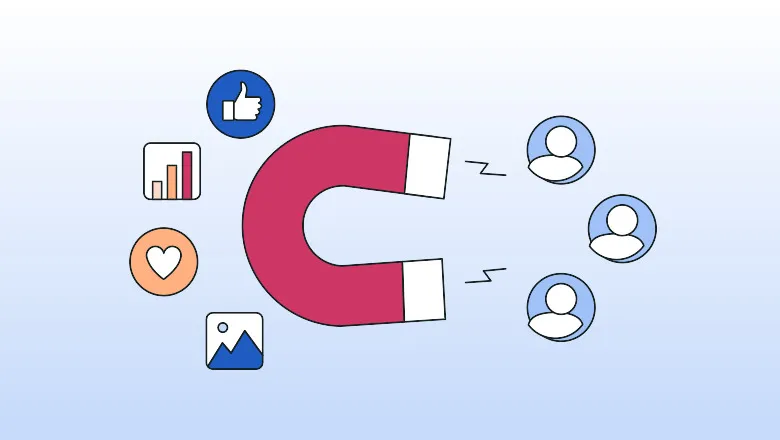
Getting a lead is a great start — but it's just the beginning. Most people won’t convert right away, and that’s completely normal. Your job now is to build trust, stay helpful, and keep the conversation going.
Here’s how to nurture leads in a simple, structured way:
1. Send a Warm Welcome Email
- Thank them for signing up
- Re-introduce your product or service
- Include the promised lead magnet (if any)
Tip: Keep it personal. Mention their name and guide them on what to expect next.
2. Share Useful, Actionable Content
- Send helpful tips that solve a problem
- Use blog posts, short videos, or checklists
- Stick to one clear idea per email
Goal: Stay helpful without sounding like a sales pitch.
3. Segment and Score Your Leads
- Use a lead scoring process to track interest
- Segment based on behavior (e.g., clicks, downloads)
- Prioritize sales-ready leads for outreach
Why it matters: You don’t want to treat every lead the same. Some need more time, others are almost ready to buy.
4. Use a Simple Follow-Up Sequence
- Plan 3–5 emails spread over a week or two
- Include success stories, FAQs, or case studies
- End with a soft call-to-action (e.g., “Ready to chat?”)
Reminder: The goal isn’t to push. It’s to gently move them closer to a decision.
Nurturing is how you turn interest into action — without pressure, just value. Focus on being useful, and conversions will follow.
Lead Generation Metrics You Should Track

Tracking the right numbers can tell you if your lead generation efforts are actually working — or just eating up time. You don’t need to be a data expert to get started. Here’s a quick breakdown of the key metrics to keep an eye on (and why they matter).
Quick Tips to Get Your First 100 Leads Faster
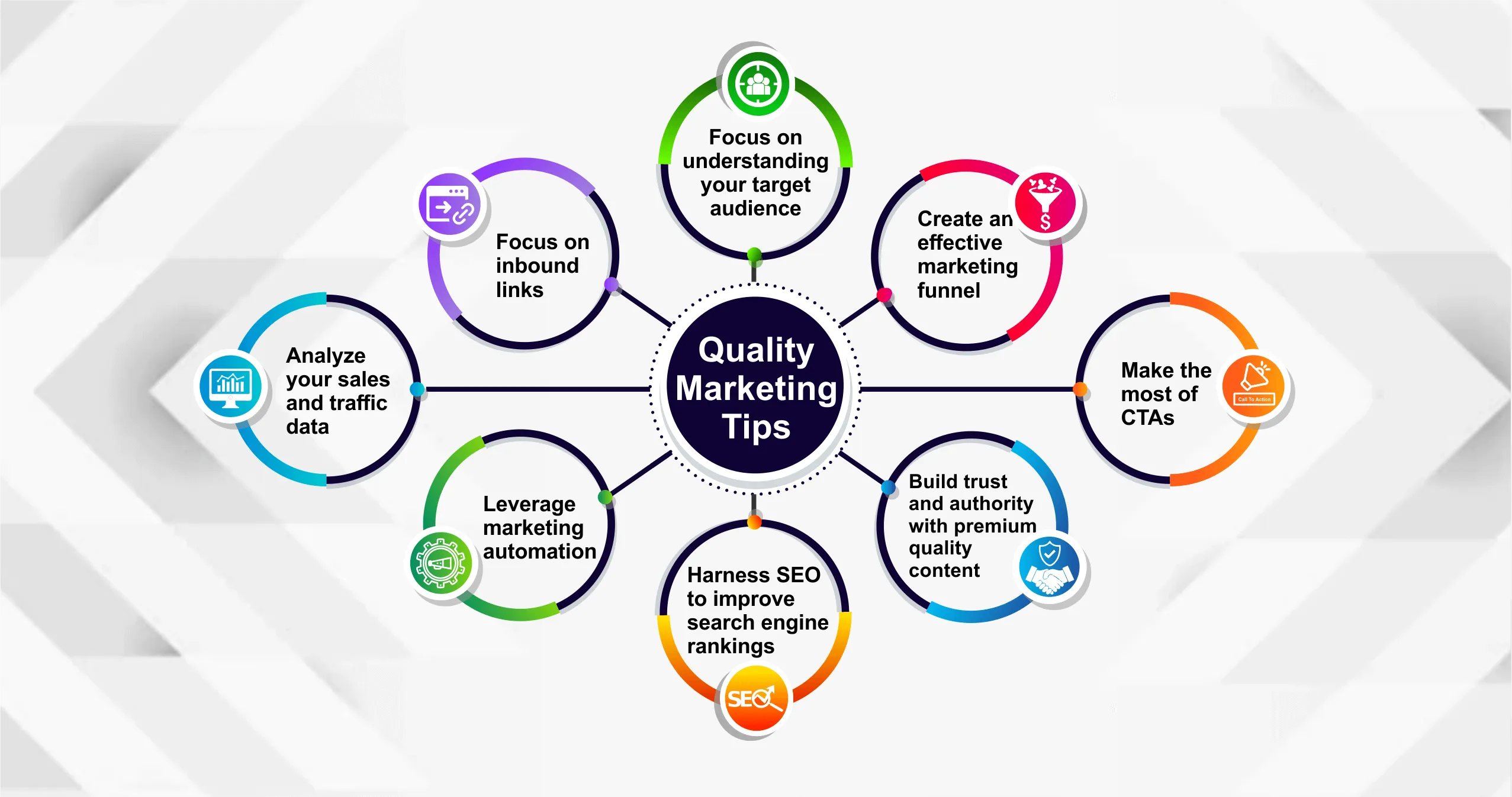
Not sure where to start? These quick actions don’t need fancy tools or big budgets — just a little effort and consistency. Here’s a simple comparison to help you choose the best way to start generating your first 100 leads.
Common Mistakes by Sales Team (and How to Avoid Them)
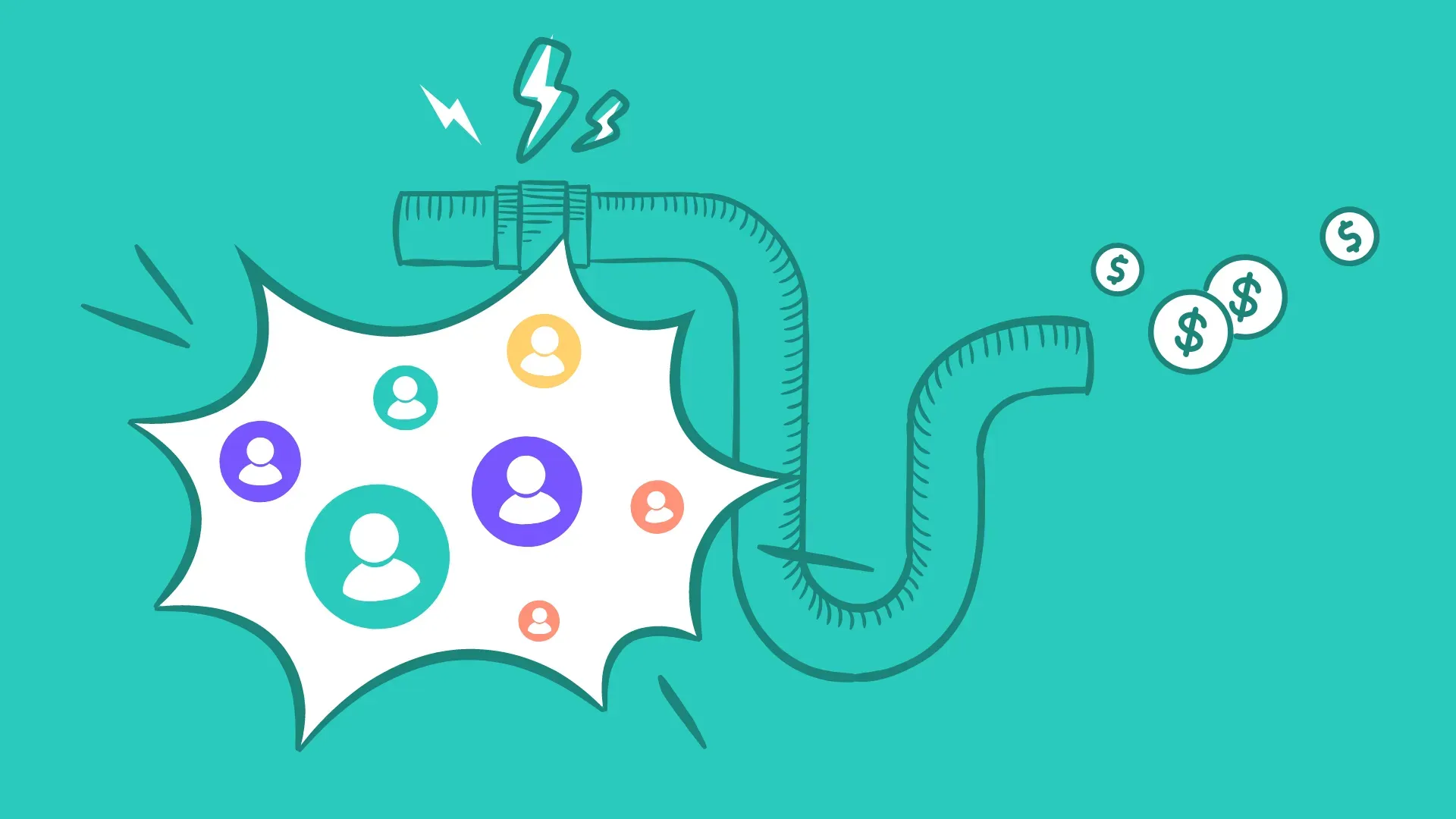
Even the best sales teams slip up, especially when lead generation is new or rushed. But a few small changes can make a big difference in how leads are handled — and how many convert.
Here are the most common mistakes beginners make, and how to fix them before they cost you opportunities.
1. Not Following Up Promptly
When a lead signs up and hears nothing for days, it sends the wrong message. Speed matters — especially when your product or service is fresh on their mind.
How to Avoid It:
- Set up automated welcome emails
- Use reminders or CRM tasks to follow up within 24 hours
- Assign clear ownership of leads to specific reps
2. Focusing on Quantity Over Quality
Sending out 100 emails a day doesn’t help if most aren’t a good fit. Focusing on the wrong leads wastes time and energy.
How to Avoid It:
- Define what a qualified lead looks like with your team
- Use a lead scoring process to rank interest levels
- Review recent wins to see which types of leads converted best
3. Ignoring Lead Context or Intent
Every lead signs up for a reason — but not all for the same one. Ignoring what they clicked, downloaded, or asked for leads to generic responses.
How to Avoid It:
- Track behavior using your email or CRM platform
- Personalize your outreach based on what they interacted with
- Use tools that capture lead information like referral source or signup page
4. Using Generic Outreach Messages
Nobody likes emails that sound like templates — especially when they’re too broad or irrelevant. Generic messages don’t spark engagement or trust.
How to Avoid It:
- Customize emails using the lead’s name and context
- Reference how they signed up or what caught their interest
- Keep messages short, specific, and human
5. Failing to Align with Marketing
If your sales and marketing teams aren't on the same page, leads fall through the cracks. Marketing might be capturing leads that sales isn’t prepared to handle — or vice versa.
How to Avoid It:
- Set up regular check-ins between teams
- Agree on what counts as a marketing qualified lead and a sales qualified lead
- Share feedback on lead quality to improve lead generation efforts
Most mistakes aren’t about effort — they’re about timing, communication, and clarity. The more your team stays aligned and intentional, the easier it becomes to turn potential customers into real ones.
Keep things human, timely, and relevant — and watch your lead quality and conversions grow.
FAQs About Lead Generation for Beginners
1. What does a lead generator do?
A lead generator helps attract potential customers and collect their contact information so your sales team can follow up. This can be a person, a tool, or even a strategy.
2. Are lead generators worth it?
Yes — especially when you're starting out. The right lead generator saves time and brings in leads that actually fit your product or service.
3. What does it mean to generate leads on social media?
It means using posts, ads, or profile links to drive people to sign up, message you, or visit your landing page. Social platforms can be powerful for direct engagement.
4. What is a lead generation strategy?
It’s your plan for attracting, capturing, and nurturing leads. A good one includes tools, messaging, and steps that fit your audience.
5. Is lead generation legit?
Absolutely — when done with consent and transparency. Spammy tactics? Avoid them.
6. What is the best example of lead generation?
A free downloadable guide in exchange for an email. It offers value and starts the relationship.
Conclusion
You don’t need to be an expert or have a big budget to start generating leads. With the right steps, a bit of consistency, and tools that actually make sense, getting your first 100 leads is completely doable.
Remember, it’s not about doing everything — it’s about doing the right things, one at a time. Start with what feels manageable, track what works, and keep showing up.
You’ve already taken the most important step: learning how it works. Now it’s your turn to put it into action — and watch your list grow, one real lead at a time.

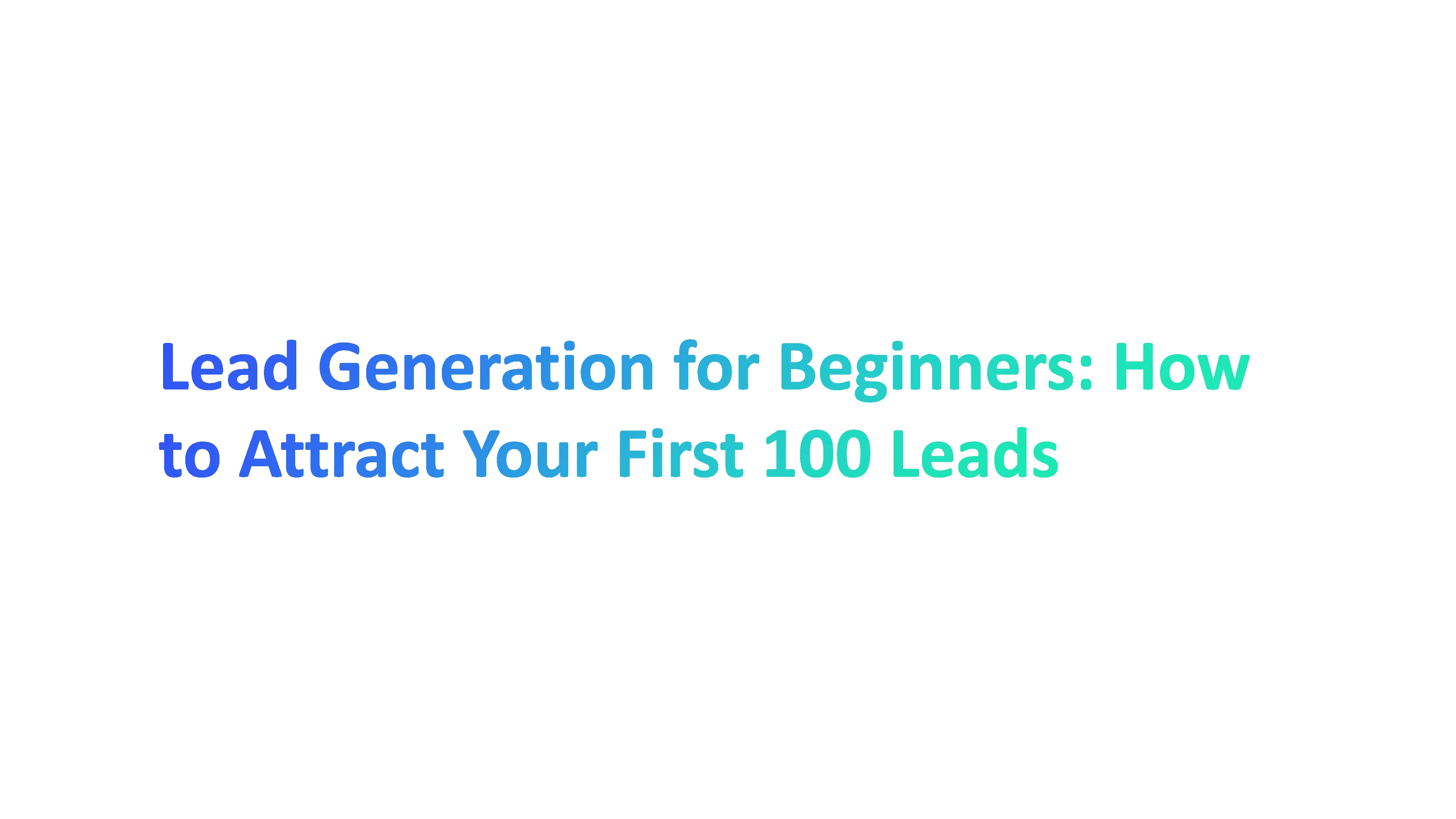



.jpg)

.jpg)
